by Eric Meier
In the process of identifying wood, things can get a bit overwhelming when faced with the hundreds and hundreds of possible species. Yet in the context of everyday woods that most people in the United States or Canada are likely to encounter, the list of possible woods is usually much shorter. This article is meant to act as sort of a “Cliffs Notes” to help address the most common (and hopefully, obvious) questions of wood identification.
1. OakComments: This wood is everywhere! Chances are, there’s something made of this wood within a stone’s throw of where you’re sitting right now. It’s used for cabinets, furniture, flooring, trim, doors, and just about anything else that can be made of wood! It’s very frequently stained a medium reddish brown, so it may look slightly darker than the raw sample pictured to the left. Lookalikes: Ash (lacks the prominent rays that are found in oak). Also, see the article on Distinguishing Red Oak from White Oak. |
|
2. MapleComments: This light-colored wood is seen almost as frequently as oak, and is usually not stained a dark color, but is kept a natural whitish-cream or sometimes stained an amber-yellow. It’s commonplace in furniture, flooring, trim, and in places where a pale, light-colored wood is needed. Quartersawn pieces with a freckled appearance are commonly used in countertops and butcher blocks. Lookalikes: Birch (generally has narrower rays than those found in maple). Pine (generally much lighter and softer than maple, and with more conspicuous color in the growth rings). Also, see the article on the Differences Between Hard Maple and Soft Maple. |
|
3. WalnutComments: The real deal. Walnut is unique in that it is one of the only woods that is naturally rich, deep chocolate brown (though it can sometimes be slightly lighter as well). It’s almost never stained, and is very popular for use in furniture. It’s also not uncommon to see walnut used in veneered pieces as well. Lookalikes: Mahogany (sometimes it’s stained very dark and the color can appear very similar to walnut). Butternut (sometimes called “White Walnut,” it’s related to walnut, but is paler in color and very lightweight). |
|
4. CherryComments: The subtle reddish brown appearance of cherry is usually seen on fine furniture and trim. It’s also not uncommon to see cherry used in veneered pieces as well. Along with Black Walnut it’s one of the premier hardwoods in the United States. It’s sometimes stained just slightly darker to give it a more aged appearance. Lookalikes: Poplar (stained poplar can be almost impossible to tell apart from cherry). |
|
5. BirchComments: Most commonly seen as plywood. Birch also tends to pop up in furniture and millwork too. Lookalikes: Maple (generally has wider rays than those found in birch). Cherry (the grain patterns are very similar, and if the birch is stained, it can be difficult to tell apart from cherry). |
|
6. PoplarComments: This is an inexpensive utility hardwood that’s used in a number of applications, such as upholstered furniture frames, veneer, and is also stained to mimic other more costly hardwoods. Lookalikes: Cherry (if poplar has been stained, it’s almost impossible to tell apart from cherry) |
Get the hard copy
 If you’re interested in getting all that makes The Wood Database unique distilled into a single, real-world resource, there’s the book that’s based on the website—the Amazon.com best-seller, WOOD! Identifying and Using Hundreds of Woods Worldwide. It contains many of the most popular articles found on this website, as well as hundreds of wood profiles—laid out with the same clarity and convenience of the website—packaged in a shop-friendly hardcover book.
If you’re interested in getting all that makes The Wood Database unique distilled into a single, real-world resource, there’s the book that’s based on the website—the Amazon.com best-seller, WOOD! Identifying and Using Hundreds of Woods Worldwide. It contains many of the most popular articles found on this website, as well as hundreds of wood profiles—laid out with the same clarity and convenience of the website—packaged in a shop-friendly hardcover book.

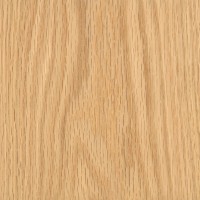
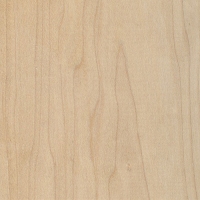
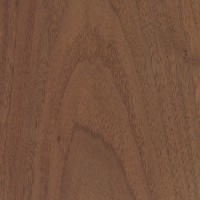
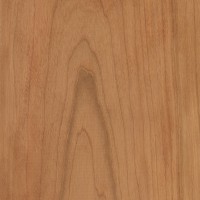
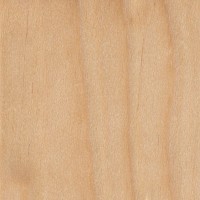
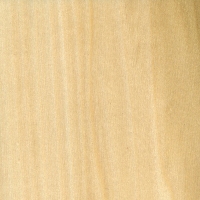



Anyone know what type of wood this is?
Looks like walnut to me.
Hello can someone please tell me what type of wood this is I was guessing like oak or something I’m really curious.
Hello my husband purchased a bed frame of solid raw wood and I’ve been trying to identify the wood used. We’ve had it about 7 years now. Some of the boards are cracking and splintered. I’m trying to restore it. I’m currently using a mixture of bees wax, coconut oil and lemon oil.
It looks like a dense softwood was used, possibly douglas fir or a species of yellow pine. The cracks could simply be from the fast inital drying the wood went through — especially if the wood used came from construction lumber.
Any idea what type of wood this is? I got at a garage sale in Oregon a few years ago. When freshly cut is appears very orange. I’m using it to make my dad an urn but would like to know what it is. Appreciate the help.
Can you get a picture of the wood grain that’s been sanded? I can’t make out very much detail as the surface appears to be very rough sawn. Also, is the wood fairly light in weight and/or soft?
Here are some additional photos of different sections of the same board, sanded down. I would say is medium to hardwood. It is not super heavy but not light either. The weight feels right for the size of the piece you are holding.
Looks like a softwood species, though with the tightness of the grain, it is probably from an old growth tree, so above average weight and hardness. Best guess based on color and appearance would be douglas fir.
Thanks. I just couldn’t figure out why it is so orange. The dust is a deep orange color.
Can you tell me the type of wood in this mirror frame. The actual color is a little more reddish than the photo. It is from western Washington, or possibly Pennsylvania if if it 100 years old. The mirror is not beveled, and the back has wooden slats. Thanks!
(Did the photo attach?)
Sorry, the pic did not attach.
Got it to work, pic attached now.
Looks like oak.
i just sold an old warehouse i had for 40 years, and had been collecting all sorts of building materials, including hardwood flooring. i thought it was all oak, but opened one box and it was this dark, almost mahogany looking stuff. i am using it as a decorative border in a garage apartment, but i am running short. the closest thing i have been able to find is sappan, which is similar to the lighter of my two colors. however, when googling it, the only place i saw it for sale was alibaba, and it was discontinued. is this… Read more »
I can’t tell from the pics, sorry. It looks like two different species to me, do they have a similar scent? Where did you come up with sappan? I’ve never heard of that name before, and it seems to be pretty obscure.
I cut up some small logs from a tree in the southwest corner of north carolina. Any idea what this might be? The wood is fairly hard with a satiny sheen, but it tends to chip easily when planed. I’m finding it somewhat difficult to work with. I rubbed some boiled linseed oil on the piece to the left.
It’s hard to say for sure from that pic, but to me it looks closest to black walnut. Since they’re small logs (limbs?), that would explain the wide, light-colored sapwood.
Thank you. I did make a lot of walnut colored sawdust while cutting them up, but I was confused by the green and bluish streaks running through them. Also, it’s very likely that they are limbs.
Good morning. What wood type is pictured as part of the title of your database?
The wood logo is green ash.
My antique trestle table was made from old barn boards from either Whitman MA or Machias ME. My parents knew the man who made it back in the 1970’s. I can’t figure out what wood (s)the top is made from. It is two wide boards joined. After refinishing it, the two pieces that make up the table top are different colors and grains. It is very heavy, hard wood. Can you help me identify it? The pictures have a layered combination of special walnut and classic gray stain on them.
Can you reattach pics? They didn’t come through.
Shoot. I will now. I could only add two photos because of the size allowed to upload. Let me know if you need more.
Hard to say from the pics, it appears to be a ring porous hardwood. Assuming it is truly a common US hardwood, and the color is natural and not a stain, it could be black walnut.
I was thinking walnut and cherry seeing the top is two diff woods. . Thank you
Hi! I just purchased this lovely little handmade set of drawers from an antique store. I’m trying to identify the wood used, as part of knowing more about its story. Your site has been very helpful! But I feel unable to completely narrow it down. I’d be so grateful for any help you can provide!! Thank you!!
Where are you located? It doesn’t look like anything domestically available in the US, so you may have something special. Looks like a tropical hardwood of some sort. Seems like it would be hard to ID.
Thank you so much for your response!! I’m in Michigan. I was unable to get the history on the piece when I bought it. I’m hoping the dealer will call back with more information. It’s clearly handmade and old. It was labeled as a “library card holder” but it’s definitely not a card catalogue. Thank you again! Just knowing it’s tropical hardwood is great and it’s one more piece to its story.
Hard to tell as I suspect that the wood may be stained. Would need to see a closeup, finely sanded view of endgrain to get more info.
Thank you very much! I’m not sure I will be able to get one, but if I do I will post it. I appreciate your kind help!
I just realized I should have provided shots of the interior.
Hi Eric, I’m trying to identify this wood beam that I have. I believe it’s a hard wood (very heavy). Thanks.
Hmm, looks interesting. It doesn’t look like a domestic hardwood to me. Do you know where it came from, or where it was obtained?
I salvaged it from an empty lot near Vancouver Canada. No history on it. At first I thought it was a beam from a pier, but after I planed it now i’m not sure.
Possibly machiche? It appears to be a tropical hardwood, which can be pretty difficult to ID.
Chad, In 2015 I received a ton of small pieces of what looked exactly like your stock unfinished. I turned them all into tealight holders and they sold like hotcakes. This is the only image I have of one of the offcuts that had a pretty intense inclusion that was reserved for an art piece. The closest I’ve come to identifying is Bolivian Rosewood.
Trying to match flooring in Florida house built in 2007, any thoughts on what type of wood flooring this could be?
Hard to tell from the picture, as it appears to be stained. May want to try using something like maple or birch that has similar grain pattern and try to match color with stain.
I was hoping someone may be able to help me identify this beautiful orangish wood species.
I can’t tell from that pic, sorry. I would need to see a closer image of the grain, as well as a picture of the endgrain to be able to get a better idea.
Hi. Any idea what type of wood this is? It is very heavy and was expensive.
I can’t tell from the pics, sorry. Knowing the geographic source of the piece might shed some light and narrow things down.
Thanks Eric. It was bought in the Middle East and I understand it was made in Thailand.
Okay, that’s helpful. I can see on one or two pieces in the light from the pic that it is ring porous. So I’m going to say it’s teak, with a mixture of sapwood and heartwood, which has been stained a darker color to help blend the contrasting light and dark of sap and heart.
Hello,
I uncovered this in my 1920 craftsman-type home. Most of the original wood was removed in the 60s to make the house look more mid-century. Just a few of these remain in the hallways. I’d like to know what kind of wood it is in order to replicate the house’s original look. If you can help me, I would greatly appreciate it.
Thank you,
Seth
Can’t tell from the pic, appears to have a stain or at least patina from age and wood finish applied. Would need to see raw wood to get a better idea. Possibly a softwood species.
Im trying to figure out what type of wood this is. Thanks
Red oak
Hi, I recently got an older (mid-century) dresser set and I would like to definitively know what type of wood is used for one of the dresser’s drawers. Interestingly, the other dresser (same brand) clearly uses oak for its drawers, but this one dresser uses something different. Is it poplar perhaps? It’s not soft, doesn’t leave a fingernail imprint when pressed firmly. Would love to know exactly what it is. Thanks! (Both dressers are Harmony House brand, if it helps).
Maple is a possibility. No way to definitively ID the wood from those pics. Would need to see a clearly sanded, closeup shot of the endgrain to have a better chance.
Hello, I recently acquired this table of supposed solid black/American walnut but part of the surface sunk in within a couple of weeks and I could now see the inside/untreated surface and based on my limited knowledge, I cannot tell if this is actually solid wood or MDF. The surface also scratches very easily, for example, moving my laptop on the table scratches it. Thanks
From the endgrain shot of the tabletop, it looks like solid black walnut. Not sure what that little thing is you’re photographing, but it might just be a small knot that fell out. As for the scratches, if they are light surface scratches that’s a reflection of the finish on the wood and not the wood itself. Maybe the table would have been better suited with a polyurethane finish?
Thanks, this is very helpful. It is indeed a knot that fell in rather than out, there was some hollow space beneath it. The photo was just trying to show the inside of the hole as it doesn’t quite look like solid walnut (lack of grains, color, texture), but then again, doesn’t feel likely that even a poorly made MDF table would have the veneer top collapse in…… One thing to note also is that every single surface including the area around the screws underneath have been painted over
I can’t see the area that you are talking about where you say it is sunk in or collapsed. Can you elaborate? Also, I don’t understand when you say all the surfaces have been painted over? Do you mean wood finish applied over the metal screws? Obviously the tabletop can’t be painted over as that would be opaque.
Sorry for the confusion, the first photo shows where the knot fell/collapsed into the table, the 2nd is a close up and the 3rd shows a even closer close up showing the inside unfinished wood, and just the color and texture of the unfinished wood looks a bit strange to my untrained eye for a solid wood table. “Painted over” is probably a bad way to explain this, what I meant was finished, so every wooden surface conceivable is finished the same way the table top is finished, which include the underside of the table and all the nooks &… Read more »
I think what may have actually happened is that there was a loose knot in that area, and it just fell out. It may have just shrunk into the wood too. Either way, you could try filling it with a very dark wood filler, but you may end up doing more harm than good if you don’t know what you’re doing. The fact that the underside and all surfaces of the table are finished seems like a good thing to me. In addition to providing protection, a finish also seals out moisture and humidity changes, making the wood more stable.… Read more »
Can you please identify the type of wood here. Would greatly appreciate it. Thanks
I can’t tell, where did it come from. It doesn’t look familiar.
*edited to remove commercial link* “Handcarved Lombok Buffet”
From the description, Lombok is a place in Indonesia, and I wouldn’t be surprised if that’s at or near where the wood came from as well. My best guess would be something like a species of Albizia or some other diffuse porous hardwood from the Pacific Island region. If you actually look closely at the pictures, you can see they just edged glued narrower boards together, and didn’t appear to have too much of a concern for trying to color match them, so there’s some heartwood and sapwood pieces glued next to each other.
Need help identifying this wood type.
Hello! I’m trying to figure out what type of oak this is. Is it white, black or red? It’s from central Pennsylvania. Thanks!
I’m not sure actually. Everything about it looks like white oak, but I can’t see any tyloses in the endgrain pores, so that’s odd.
Any idea as to what kind of wood this is? I saw it on an island top in a kitchen. Owner wasn’t available to tell me what kind of wood it is.
Can’t tell for sure, but the general type is a diffuse porous tropical hardwood. Hawaiian koa and Australian blackwood both have similar appearance, but the wood in question could be anything. Grain pattern sort of resembles mahogany, but with a more streaked appearance than usual.
Someone mentioned Butternut or Hickory. Thoughts?
I would think butternut to be way too soft to be used for a countertop, but who knows. The pores actually do look similar, and the top does appear dented. I don’t think it’s hickory based on the pore arrangement I can see in the picture. Either way, you’d probably have to use a wood stain to get a decent color match, so that would be my main focus of energies.
Last shot….maybe Alder? Grain seems very similar, no?
Your image didn’t come through, try reattaching.
They are the same 3 pics from this thread. After searching forever, seems like the wood island top might be Alder or rustic Alder.
What kind of wood is this? Found few boards in my barn and wondering what it is. It is all tough cut of different kinds of wood. Found a bunch of black walnut?
That doesn’t look like black walnut to me. Would need to get a cleaner look at the grain once planed to get a better idea though.
Pulled this sink door from a boat today and trying to indenting what it is? It’s a veneer on plywood and has been varnished. Any ideas would be much appreciated!!
Thanks for this! Like the others, could you help identify this wood? Found from a downed tree outside of Boston, MA. The leaves in the forest looked like oak, elm, and pine.
Based on the second picture, I can see that it is a ring porous hardwood with very large aggregate rays, which strongly suggests oak. Based on the black discoloration near the sapwood/heartwood, I’d be more inclined to guess it to be a species of red oak, but not 100% sure.
Hello, I recently received some very rough cut wood and was told it was all hardwoods. I planned then down and came out with a board I did not recognize, could anyone help me out please.
Those darker streaks is called spalting. It’s most common on maple, but it can occur in the sapwood of just about any wood species. Was this pallet wood? Difficult to ID without a clear, sanded, closeup picture of the endgrain.
I’ll try to get more images soon. However, based on what you see, any idea on whether or not this is even real wood? Anyway, I know this frame came out of California in 1972 but that’s all that I know. I’d like to recreate it, but want to use whatever they used….
That doesn’t look like a natural wood color. Probably a softwood that’s been stained a walnut/cherry color. Best bet would be to look for a good stain rather than trying to match species of wood.
Can anyone tell me what kind of wood our cabinets are? I was thinking maple from the above post? Located in Southern California.
Yes, I agree, maple is most likely.
Hi there. I lucked into several different hardwoods that have been sitting in someone’s garage for decades. That’s all I know about them. I would love to know more. I took pictures of the end grain that I sanded to 220. Any info would be great. Thanks for being such a great resource.
Please attach pics, they didn’t come through.
I was given several pieces of lumber. They’ve been milled and planed on all sides. Trying to determine the wood variety. I’m pretty sure there are two different ones. These have been in the rafters of the garage for probably 20+ years and are hard and dense. My thumbnail won’t even make a scratch or dent going with or across the grain. One has a red/purple cast not unlike Purpleheart but more red. The second one is like also rock-hard but more of a mahogany color- at first I thought it was Mahogany, but it’s harder than Maple. Coloration on… Read more »
Looks like a diffuse porous tropical hardwood — probably one of the hardest types to pin down for an ID. Endgrain photos may help shed more light.
Here are more photos. There may actually be three types…
Thank you for all your help!
I still can’t tell, sorry. The top one is reminiscent of bubinga. The bottom two I’m not sure.
Thanks for looking at them!
The top one does look like purple heart to me. The middle looks like padauk. Image is known samples of purple heart and padauk.
Teak is possible. The reality hard one could be ebony. Natural ebony is not black, but it is usually a little darker than that sample.
I love in ohio, I got this from a restaurant here.
Can anyone tell me what wood this is ?
I can’t tell from those pics, sorry. Where are you located? How heavy is the wood? Can you get a picture of the endgrain?
First, thank you for an awesome website.
I have this rough milled lumber (milled with a chain saw type rig) that has been sitting in a field for 10+ years. Hoping you can help identify the species and therefore value. I have 14 pieces that are approx. 13.5″ x 3″ x 22′. I also have one 15″ x 15″ x 22′. located in northwestern NJ. Thanks for any insight you can provide.
Would need to see a cleaner surface of the endgrain to have a better chance at ID.
Floor – built in 1913 Freeport, TX. Can’t dent with fingernail, but is not too hard. It is dense, but that may be just cause it’s old growth… 2 1/4 inch strips, most in excess of 18′ long. Greatly appreciated.
Leading contenders are douglas fir and southern yellow pine. Based on your location, I’d bet it was a species of southern yellow pine. Old growth material is harder and has tighter growth rings which makes better flooring than new plantation grown stuff.
I took this mantle out of my childhood home, it’s over 50 years old. Any idea what kind of wood it is. It’s extremely heavy and 9 1/2’ long.
It looks like a softwood (like pine) with a dark walnut stain.
Hey there! Curious if anyone can tell me what wood(s) this chair is made of?
Looks like a ring porous hardwood. Possibly elm?
We just moved in to a 1900 home in Midwest Ohio. This wood is under all the carpets, no one knows what type this is. Can you help us? It does appear to be stained/painted.
It looks like antique / heart pine.
Hi – i am stripping paint from the woodwork around my fireplace (1923, Southern California) and all of the wood so far is Douglas fir like most of the homes around here but then I got to the mantel and it’s much lighter and possible a different grain? Anyone recognize what it is? I’m assuming it was replaced at some point because all of the other wood I’ve stripped down to has a dark stain.
John
Looks like a very light grain, at least from the picture. One possibility based on your location is sugar pine.
https://www.wood-database.com/sugar-pine/
Thanks for the info! One more question. I took off some more paint from the top and there are a few boat patches. Would that suggest that this is some sort of plywood?
Looks like pine possibly white pine. Is is possibly plywood?
Just moved into this house and can’t figure out what my kitchen cabinets are
Looks like birch, possibly paper birch.
Hi! Can someone help me identify the type of wood and color for my wood floors? My home is a 1950’s Cape Cod. Thanks!
Looks like oak, probably red oak.
Thank you!
Hi there!
Any chance you can help me identify this wood from my SoCal 1914 Craftsman windows?
Can someone please help me identify this wood? It’s a bookshelf from a local tree here in the mountains of W NC.
Thanks,
Could that be a type of Koa? Not sure. but it looks familiar.
Help….what wood is this. 1972 solid wood tables.
Some sort of burl veneer; knowing location might help give more clues.
Hi.
Could anyone tell me what this timber could be? My father suggested silky oak. It has a very rough texture after being plained.
Are you located in Australia? The closest North American equivalent to silky oak is sycamore.
Can anyone help me identify the type of wood this custom built bookshelf is made out of?
@ali, it certainly looks like poplar to me.
imo, poplar should only be stained if it’s generally unseen.
poplar is *excellent* for interior painted woodwork but stained poplar…Never.
Cut this out of a wet log that was laying around a day ago, not sure what it is though.
Poplar
Hi Eric,
I found a block of wood that has been discolored by the sun over years. Cutting it open, it was very light colored inside; also very light-weight. Could it be Balsa?
Thanks
Is it Holly? There are lot of bright color wood, and it might not from NA local
This is a second picture
Please help me identify these wood floors. They are original to my house 70yrs old and I will need to replace a portion for a nessary repair ?
Possibly oak? Hard to tell from the picture.
I think I have that wood I’m recycling from my old barn it’s a very beautiful wood I’m still trying to find out what type it is.